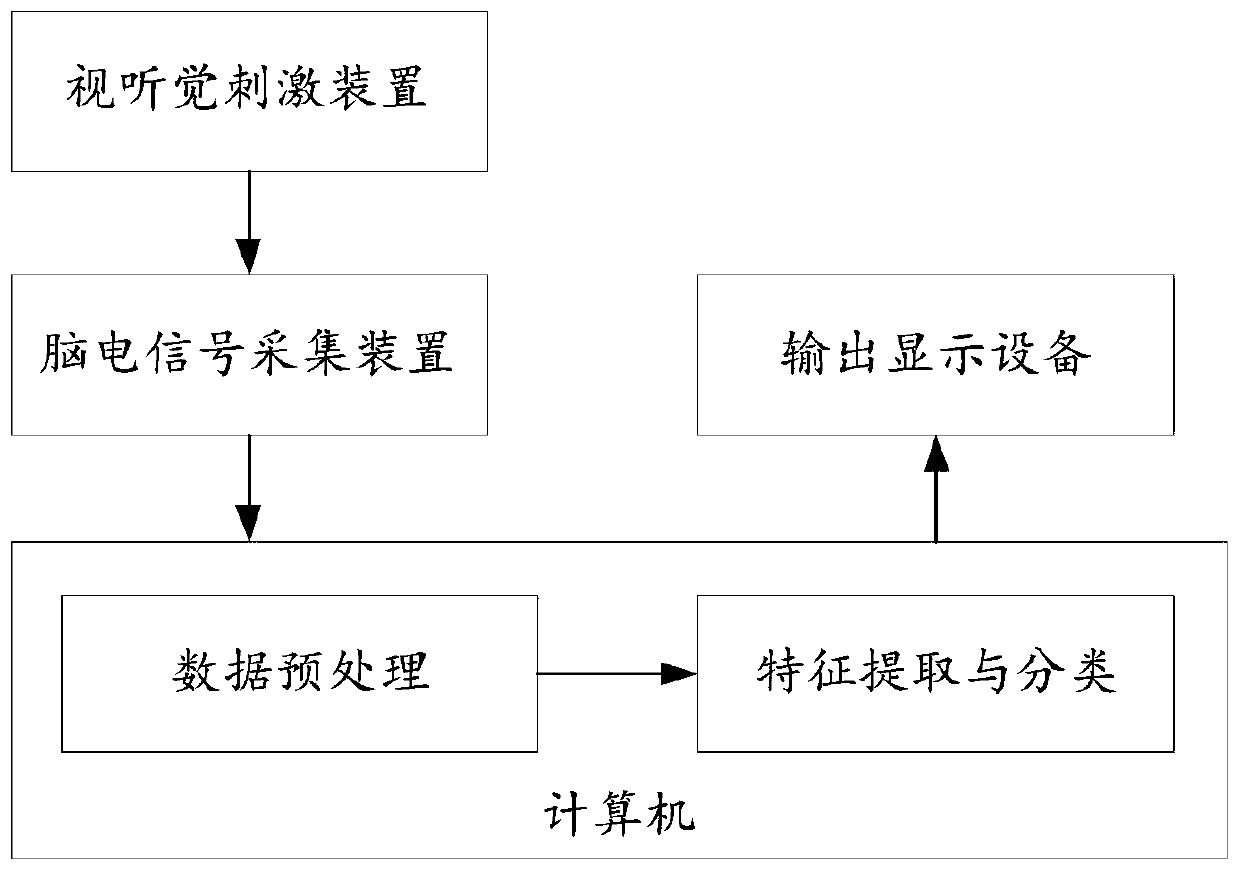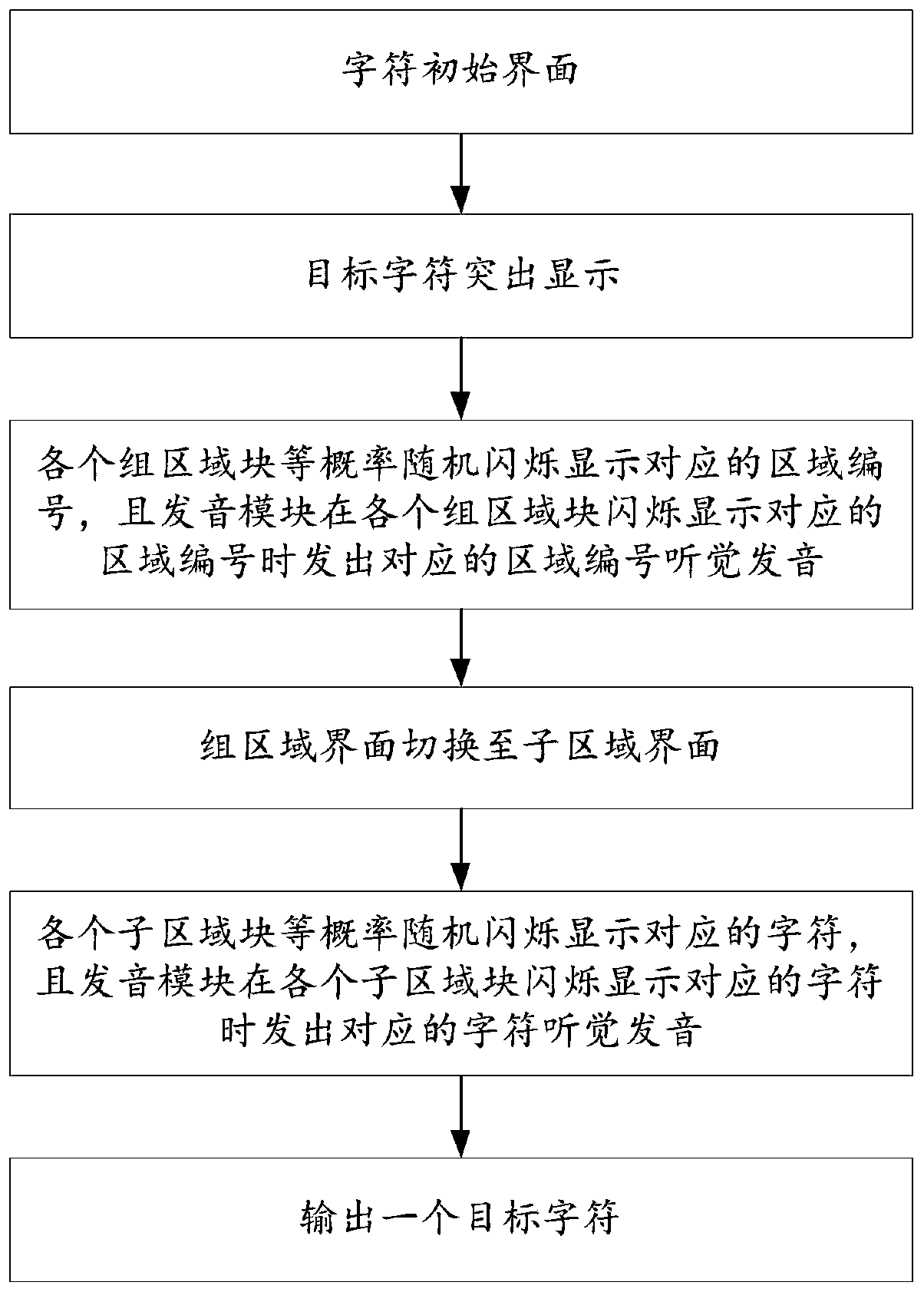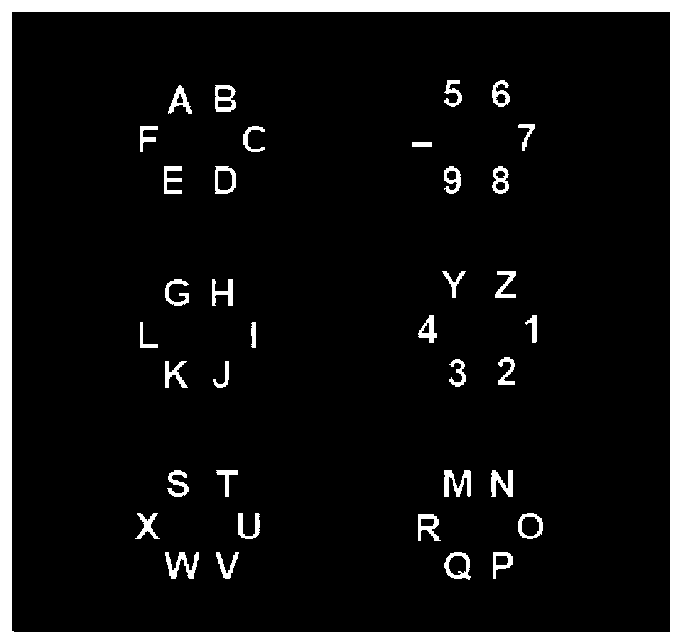Visual and auditory brain-computer interface spelling system and method based on space and semantic consistency
A brain-computer interface and auditory technology, applied in the direction of mechanical mode conversion, computer parts, character and pattern recognition, etc., can solve problems such as unsatisfactory performance of the brain-computer interface, and achieve the effect of improving performance and strong versatility
- Summary
- Abstract
- Description
- Claims
- Application Information
AI Technical Summary
Problems solved by technology
Method used
Image
Examples
Embodiment Construction
[0022] The technical solutions of the present invention will be described in detail below in conjunction with the accompanying drawings and preferred embodiments.
[0023] In one of the examples, as figure 1 As shown, the present invention discloses an audio-visual brain-computer interface spelling system based on spatial and semantic consistency. The system includes an audio-visual stimulation device, an EEG signal acquisition device, and a computer. The audio-visual experiment paradigm produces visual and auditory stimuli on the target characters for the subjects; the EEG signal acquisition device collects the EEG signals of the subjects, and sends the collected EEG signal data to the computer; The signal data is preprocessed to obtain the preprocessed EEG signal data; the computer performs feature extraction and classification on the preprocessed EEG signal data to obtain the classification result, and sends the classification result to the output display device, and the ou...
PUM
 Login to View More
Login to View More Abstract
Description
Claims
Application Information
 Login to View More
Login to View More - R&D
- Intellectual Property
- Life Sciences
- Materials
- Tech Scout
- Unparalleled Data Quality
- Higher Quality Content
- 60% Fewer Hallucinations
Browse by: Latest US Patents, China's latest patents, Technical Efficacy Thesaurus, Application Domain, Technology Topic, Popular Technical Reports.
© 2025 PatSnap. All rights reserved.Legal|Privacy policy|Modern Slavery Act Transparency Statement|Sitemap|About US| Contact US: help@patsnap.com



